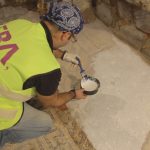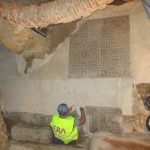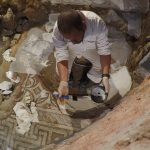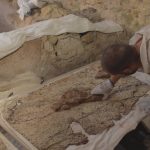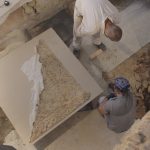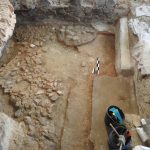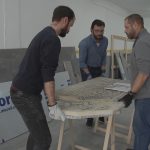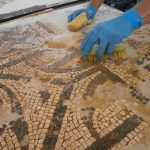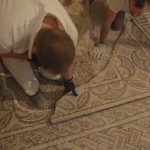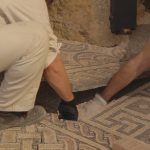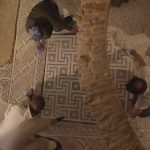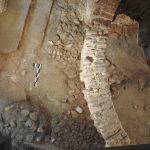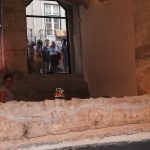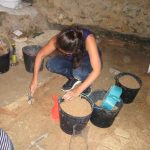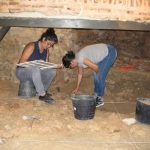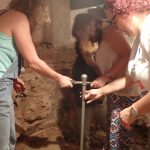Restoration of the Roman Mosaic
Credits of the text: : Era Arqueologia and DGPC (Direção-Geral do Património Cultural)
At the archaeological complex of NARC, the Roman bath-house dating back to the 3rd century AD is of particular relevance. The area of the frigidarium includes a quadrangular atrium paved with a polychrome mosaic. This coating features different frames around four panels in an orthogonal composition with decorative elements as diverse as Pelta, Solomon knots, spindles, diamonds, simple guilloche, six-strand guilloche and Swastika Meander. The strategies of archaeological excavation, conservation, restoration and musealisation of this space have been based, over the last twenty-two years, on the best practices of intervention and patrimonial exhibition. However, the exposure of archaeological contexts had repercussions on its conservation, which resulted in the blistering of the mosaic tessellate and the destruction of the stone surface of the tessellations due to crystallization of salts from the brackish waters.
Unlike cultural heritage movable assets which after a conservation and restoration intervention are placed in controlled environments, it is very difficult to achieve such control on immovable assets.
Due to the long exposure time of this pavement, it was necessary to remove and consolidate it in a workshop. Thus, between August and December 2017, NARC Roman mosaic underwent a conservation and restoration intervention developed by ERA Arqueologia. It involved complex processes of cleaning, treatment, consolidation, and its subsequent replacement on the original location under optimized conditions.
Due to the conservation works it was possible and necessary to excavate the archaeological levels on which the mosaic was laying. This excavation was performed by a team of archeologists from Direção-Geral do Património Cultural, public institution working in collaboration with Millennium bcp Foundation (which manages the Archeological site) and the Faculdade de Ciências da Universidade de Lisboa (which collected and analyzed sediment samples). The archaeological excavation exposed the structure supporting the mosaic and provided additional data on the construction materials and related stratigraphy, increasing the knowlege on this important fragment of Olisipo (roman name of Lisbon).
The Roman bath-house of NARC and its mosaic are examples of art and architecture of a past daily life, now restored and returned to Lisbon, its inhabitants and visitors. A cultural heritage for everyone’s enjoyment.
Photos of the mosaic recovery works
